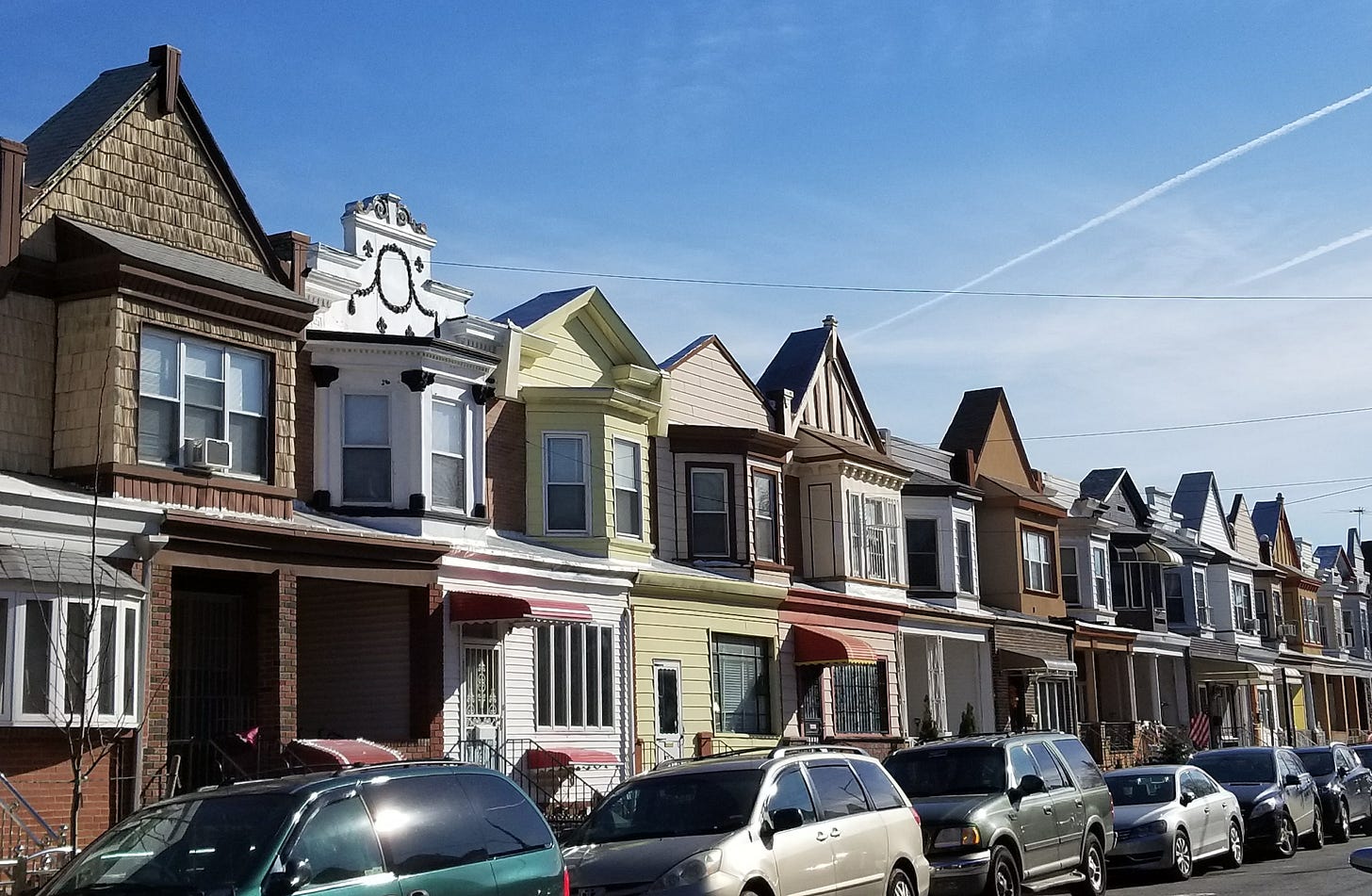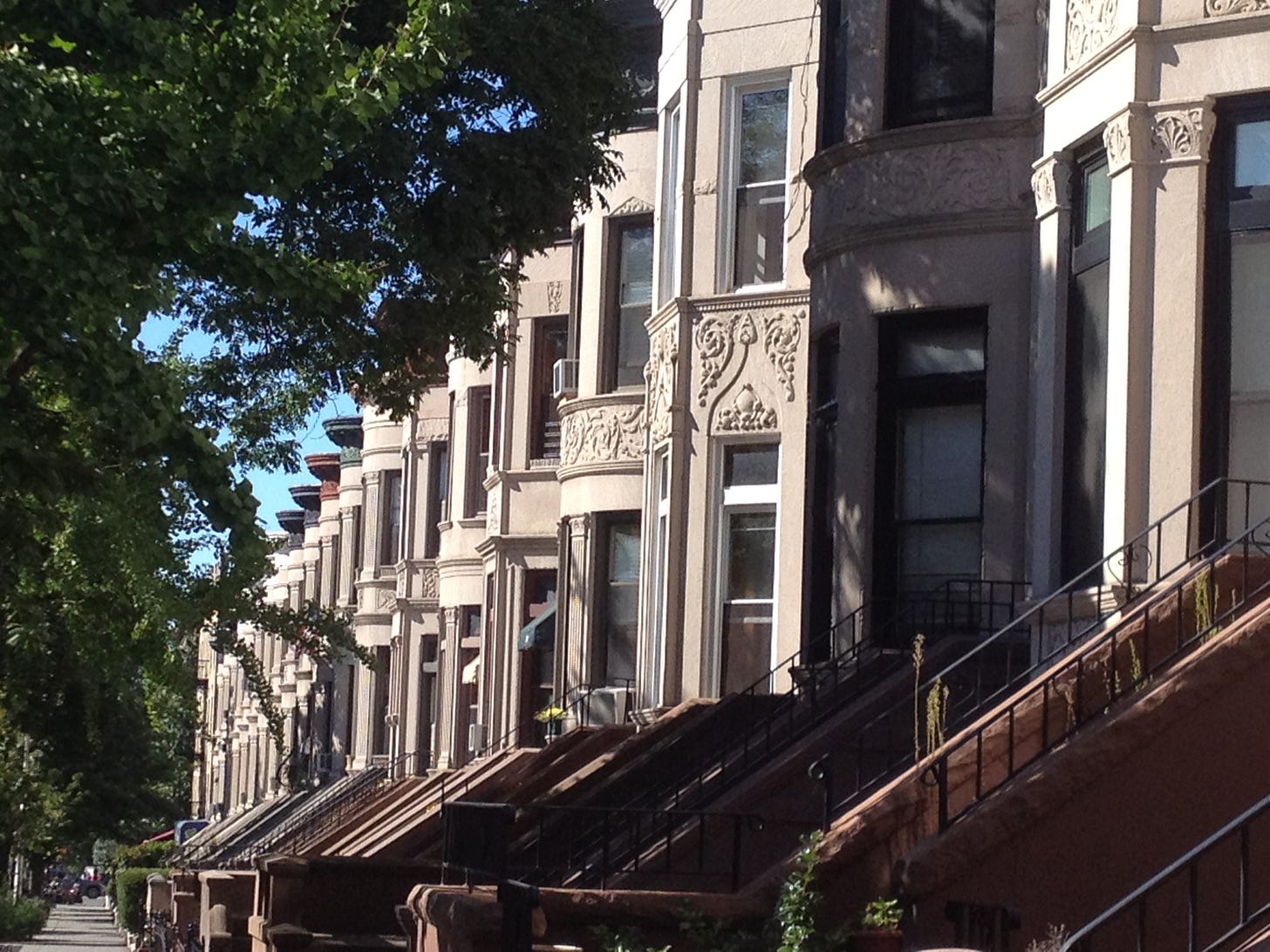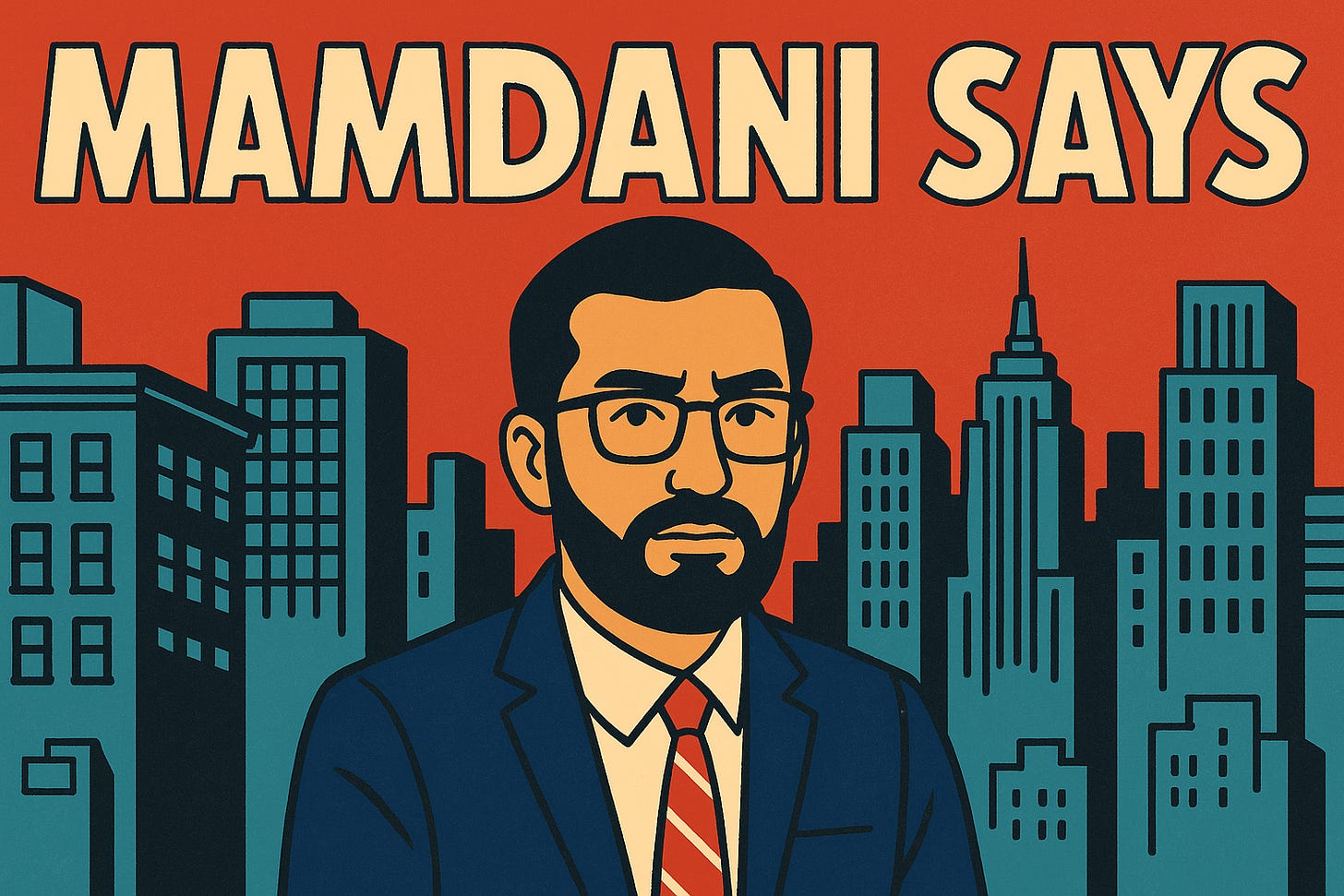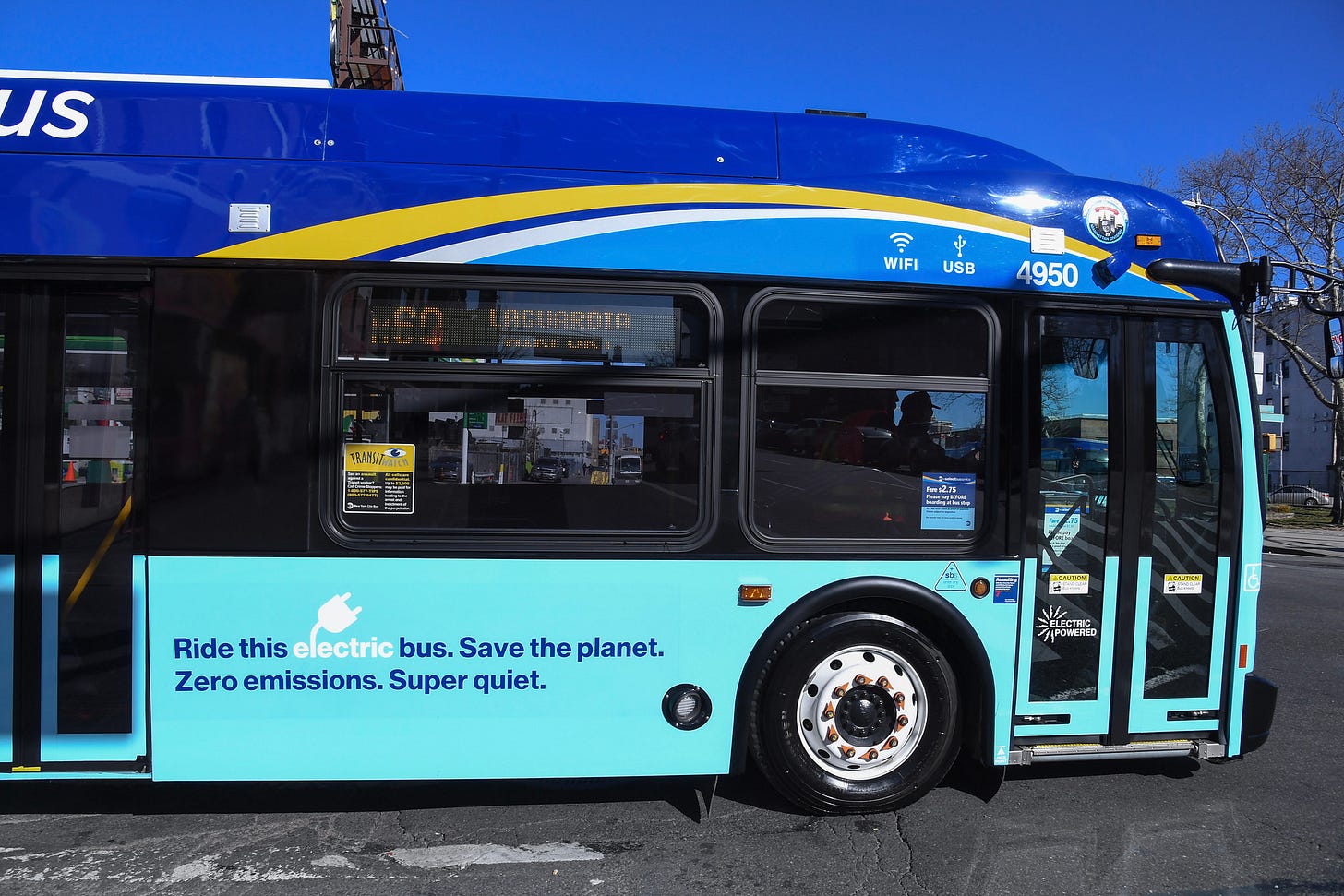NYC’s Family-Sized Housing Shortage
Also: Can Mamdani get a mandate?
The third bedroom. That extra room changes everything for a young family: your parents can come to stay and help, an au pair suddenly becomes affordable, the kids stop waking each other up, and you might even carve out a quiet corner to work from home. We knew we needed a third bedroom the day we found out we were expecting our third child.
With every baby, we moved a little further into Brooklyn. The studio was a mistake—we knew no better, couldn’t afford more, and no one slept. The two-bedroom that came next felt like heaven. Big apartment buildings have their charms: elevators, neighbors who help when you’re juggling groceries and toddlers, and kids next door for instant playdates. But that building didn’t have a single three-bedroom. We’d outgrown it, and the only one I could find was in a two-family home — and it turns out that 65% of the city’s 3+ bedrooms are in old 1-2 family homes.
Fifteen years later, finding that elusive third bedroom is even harder.
Developers build for singles and couples, not families. Smaller apartments are cheaper to finance, rent faster, and turn over more often. From an investor’s perspective, that makes perfect sense.
Families, on the other hand, stay put once they find a place that works—which makes those larger units the scarcest of all. Across the country, only about one in ten rentals on the market today has three bedrooms. In new construction, it’s closer to one in twenty. The housing pipeline itself is tilted away from family life. A 2025 survey by the Institute for Family Studies shows that even if two apartments have the same square footage, people consistently prefer the one with more bedrooms and defined rooms over open layouts — and are willing to pay more for it.
Families don’t just want more space as they grow—they usually have to move to get it. You keep scrolling listings, juggling open houses, and running numbers while your resources are already stretched thin. Nationally, families with children under six are the most likely to move in any given year — about one in five does so. In New York, those moves often turn into exits. The Fiscal Policy Institute found that households with young children are twice as likely to leave the city as those without, mostly because of housing costs. The very years when families most need stability are the years when the city makes it hardest to stay.
On paper, New York looks better than most places: a third of homes here have three or more bedrooms. But with a citywide vacancy rate near one percent—the lowest in decades—those apartments almost never reach the market. Once a family gets one, they hold on, even long after the kids are grown. So technically, the three-bedrooms exist. Practically, they don’t.
Meanwhile, the math keeps getting worse. The median asking rent for a three-bedroom in New York City is about $4,700—and those apartments rent faster than smaller ones, often being shared among roommates, a sign of just how fierce the demand is. Families who can pay do. Those who can’t, leave. You’d need to make $188,000 not to be rent-burdened—that is, to avoid spending more than 30% of income on rent. In that income bracket, suburbs become an attractive alternative.
The third bedroom isn’t a luxury—it’s the kind of housing that makes it more feasible for families to stay and keeps a city alive. New York has to make room for them, quite literally. Because it doesn’t matter how cheap the one-bedroom place is when what you really need are three.
Campaign Update: Can Mamdani get a “mandate”?
Mamdani needs majority support, which he currently does not have, to secure a real mandate for his policies. (Politico) Recent polling still shows him below 50%. (Quinnipaic)
Mamdani is expected to follow a radical-left DSA agenda if elected, according to party leaders who boasted about it at a meeting attended by the Post. (NYP)
How much will Mamdani’s ambitious plans cost? (NYT)
Former Gov. Andrew M. Cuomo wants to scrap New York City’s plan to replace the Rikers Island jail complex with borough-based jails, proposing instead to use the sites for affordable housing. (NYT)
The race for City Council speaker — the second most powerful job in New York City — is taking place behind closed doors. Adrienne Adams is term-limited, and whoever replaces her will decide which bills reach the floor, appoint committee chairs, and negotiate the city budget with the mayor. (Crain’s)
Chicago, Portland … NYC?
New York City’s mayoral race turned sharply national this week as candidates sparred over what they’d do if Donald Trump follows through on threats to send the National Guard into “crime-plagued” cities. Former Gov. Andrew Cuomo warned that a Zohran Mamdani victory would hand Trump a pretext for a federal takeover, while Mamdani cast himself as the bulwark against “authoritarianism.” (The latest polling suggests voters think both would do a decent job.)
Gov. Kathy Hochul said she has already spoken with Trump and sees no need for intervention, insisting that crime is down. Meanwhile, activists aren’t waiting — they’re organizing “day-zero” readiness plans and a new “Hands Off New York” coalition vowing mass mobilization if troops are deployed.
“What I’ve learned from other elected officials is solidarity networks on the ground that are going to be our best defense,” Brooklyn Assemblymember Emily Gallagher told Gothamist, referring to a recent call with officials in Chicago and Los Angeles. (Gothamist)
He’ll help landlords comply with Local Law 97, freeze the rent, and reform property taxes.
“To freeze the rent does not also preclude you from working on the necessity of a property tax reform agenda.”
He also wants developers to construct more residential buildings, yet declined to say how he would vote on the proposed charter-reform questions that aim to make it easier to do just that. (Crain’s)
He favors banning parking near intersections citywide. Known as daylighting, this is the standard elsewhere in the state. (Streetsblog)
He will appoint a World Cup Tsar, but hasn’t said where he’d put up all the visitors expected for the 2026 FIFA World Cup, now that Airbnb is effectively banned. (Crain’s)
Is New Housing Actually Popular?
In local and state polling across the country, large majorities say housing costs are too high and favor more housing, but real-world reform efforts tend to spark fierce opposition—zoning changes, new development projects, and regulatory shifts get watered down amid backlash.
Meanwhile, a contrasting set of national surveys reveals that many people are “supply skeptics”: only about a third believe more housing will reliably lower prices, while nearly half think it might even raise them.
Why the disconnect? Christian Britschigi argues in Reason that because many people don’t have well-formed views on housing, survey wording and context matter a lot. Also, those who attend land-use hearings and influence policy tend to have intense opposition to development—so despite broad but shallow support, local politics often favors the loudest minority.
If you want to understand how to bridge abstract support and concrete policy victories—and the tricks of persuasive framing—worth reading the full piece.
Extra! Extra!
Custom Buses: U.S. cities are paying too much for new buses, a new Brookings report finds, and the prices haven’t gone down in years, even as cars and electric vehicles have gotten cheaper, because of lack of competition, excessive customization, and “Buy America” rules. Bloomberg has an excellent story on this.
Accelerated Education: Rather than getting rid of the accelerated option, it should be the standard so kids from all schools get to benefit, my colleague Danyela Souza-Egorov wrote in the New York Post. The demand for these seats far outstrips supply — 10,000 teacher recommendations for just 2,500 seats. The New York Times published yet another story, this time talking to those on both sides of the argument.
Buying “The Hole”: New York City is launching a pilot program to proactively buy flood-prone homes in low-lying areas like “The Hole” on the Brooklyn-Queens border, converting the land into infrastructure or green space — a move residents cautiously welcome. (The City)
The science behind the human craving for livable streets: Walking not only supports physical and mental health, but urban design itself shapes how safe, engaging, or stressful a walk feels. Streets that feel comfortable and stimulating — with edges, human-scale cues, activity, and sensory richness — reduce stress and encourage people to choose walking over driving. (Streetsblog)
The Socialist Experiment Running Portland: not going so well. (NYT)
Substack Recommendation: City Journal
City Journal launched its Substack this Monday, and if you have not yet had a chance to take a look, please do. So far this week:







